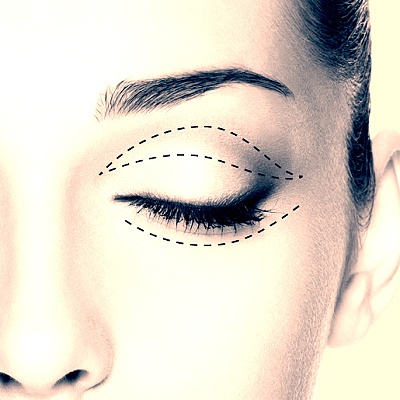Blepharoplasty (Eyelid Lift)
Lift ... Tighten ... Reshape & Blink
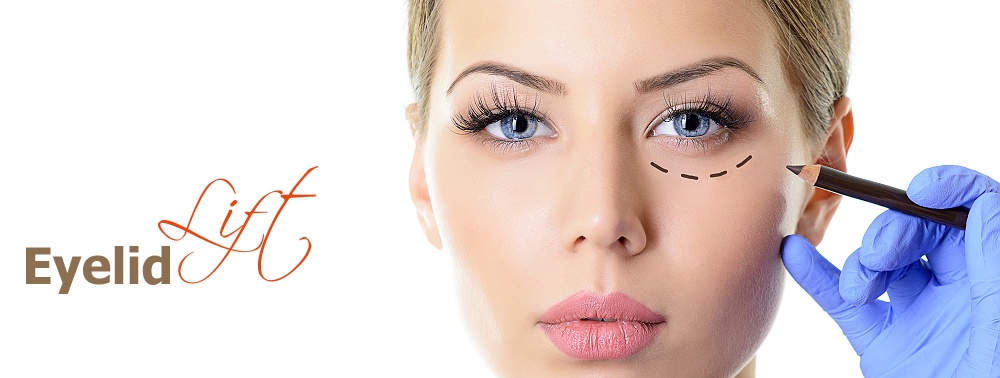
As you age, your eyelids stretch, and the muscles supporting them weaken. As a result, excess fat may gather above and below your eyelids, causing sagging eyebrows, droopy upper lids and bags under your eyes.
Besides making you look older, severely sagging skin around your eyes can reduce your side vision (peripheral vision), especially the upper and outer parts of your field of vision.
You might consider blepharoplasty if droopy or sagging eyelids keep your eyes from opening completely or pull down your lower eyelids. Removing excess tissue from your upper eyelids, lower eyelids or both can improve vision and make your eyes appear younger and more alert.
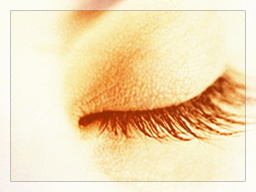
Blepharoplasty May Be An Option If You Have:
- Baggy or Droopy Upper Eyelids
(Loose Skin Hanging Down From The Upper Eyelids Over The Eyelashes) - Excess Skin of The Upper Eyelids
Interferes With Your Peripheral Vision (Hanging Skin Covering The Natural Fold of The Upper Eyelids) - Droopy Lower Eyelids
- Excess Skin on The Lower Eyelids
- Bags Under The Eyes
- Upper & Lower Eyelids Appear Puffy
(Making Your Eyes Look Tired & Aged) - Deep Grooves Under The Eyes
You May Undergo Blepharoplasty At The Same Time As Another Procedure (Such: Brow Lift, Face-Lift, Skin Resurfacing ... etc.)
Can It Be Preformed After "LASIK"?
Yes. LASIK surgery is not a contraindication to having blepharoplasty or other cosmetic eye surgery. Consult with your LASIK surgeon to determine how long you should wait after your vision correction surgery before undergoing blepharoplasty. (Generally At Least Six Months)
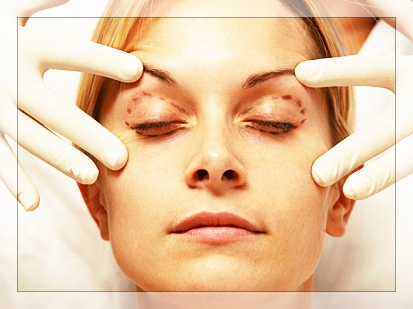
Advantages of Blepharoplasty
- It Eliminates The Puffiness & Bags Under The Lower Lids
Appear Younger & Healthier - It Eliminates The Hooded Skin on The Upper Lids
Appear Younger & Healthier - Resolves Vision Problems Related To Overhanging Eyelids
- Any Scars From The Eye Lift Will Be Hidden In Your Natural Eyelid Creases
Making Them Almost Indiscernible
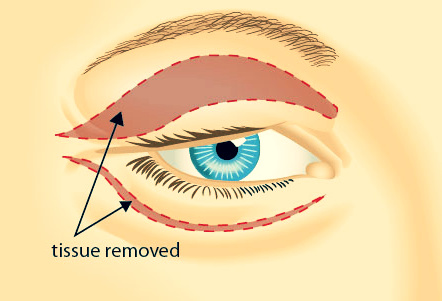



Disadvantages of Blepharoplasty
- Takes Time To See Results After Surgery
- Dry & Irritated Eyes (Following The Procedure)
- Bruising & Swelling
- Temporarily Blurred Vision
- May Also need a Brow Lift
If Your Eyebrows Droop
If You Have Creases In Your Forehead
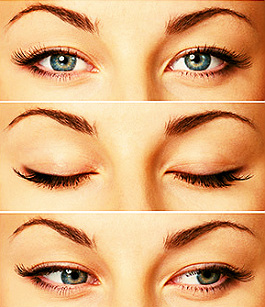

Upper Blepharoplasty
The excess skin is excised at the crease of the upper eyelid. Then a small portion of muscle is removed and the extra pockets of fat are removed as needed. The skin is sutured with removable stitches.
Lower Blepharoplasty
The muscle and skin layers are lifted and an incision is performed under the lashes. The excess fat is exposed, this usually is repositioned to fill the hollow areas in the cheek or removed as needed. The skin and muscle layers are lifted and re-draped, excess skin is excised and stitches are applied.
Discomfort can usually be controlled with pain medications prescribed by your surgeon. You may experience blurry vision for the first few days after your procedure, and your eyes may be watery or very dry.
Recovery Time: 10 - 14 Days.
